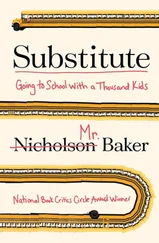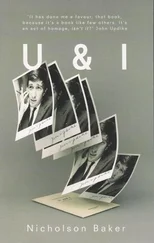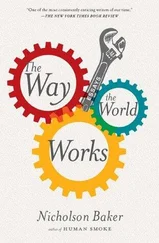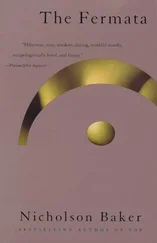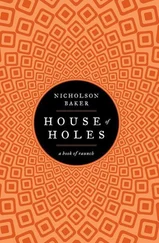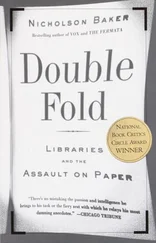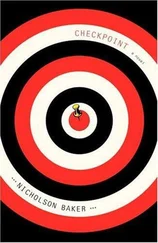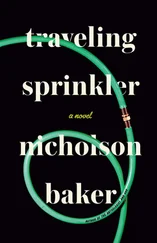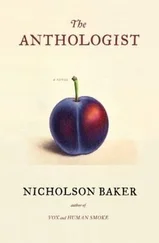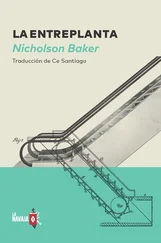Nicholson Baker
The Everlasting Story of Nory
For my dear daughter Alice, the informant
Eleanor Winslow was a nine-year-old girl from America with straight brown bangs and brown eyes. She was interested in dentistry or being a paper engineer when she grew up. A paper engineer is an artist who designs pop-up books and pop-up greeting cards, which are extremely important to have easily available in stores because they make people happier in their lives. Lately Nory was in a stage of liking to draw pictures of Chinese girls wearing patchwork Chinese robes with their hair up in a little hat, or held on the side with a pin. She told a constant number of stories to herself in the car while they drove to Stately Homes. She also told them to herself in the bathtub or in the mirror. Sometimes she and her friends made up stories together, but that of course depended heavily on the friend. Another thing Nory liked doing was making up new designs of dolls that she wished you could have the opportunity to buy but you can’t and probably never will.
For example, she drew a doll named ‘Riena.’ Riena had straight hair parted on the side and puffy sleeves. She was not stretched out with a teenagery figure or short with a massive rounded head. Her hands and wrists could bend so she could hold a miniature carton of eggs, and every egg would have a realistic crack in the middle. You would help Riena put the egg down on the saucing pan, and shuffle it around, and after a while the egg would break by itself, because it would be filled with a special substance that expanded when you jostled it. A little folded-up rubbery thing that was an egg would goosh out, probably sunny side up, in the pan. Or you could have the second option of scrambled style, or an omelette. Riena had an apron with a pattern of spoons and forks. Sadly she didn’t exist except as a drawing.
Nory was tall for her age, especially in the city of Threll, in England, where she and her mother, her father, and her brother, who was two, were living for a certain amount of time. There were quite a number of girls at her school, the Threll Junior School. She was hoping she would meet a good friend.
Threll Cathedral was the biggest thing in the city, by any means. It was an old cathedral that had a tower on it that had the unique ability to look close to you, and yet be very far away. Airplanes can do that, too. They seem close but aren’t, unless it isn’t your lucky day. Inside the cathedral was almost as beautiful as outside except that there were modern things like wires and plugs that looked as if somebody had made a careless mistake, and modern-day loudspeakers up on the columns looking pretty indistinct. There were also some big tombs carved out of a certain kind of black and red stone that was not precisely frightening but was certainly alarming, because it was so vividly black, and of course there were corpses buried here and there in the walls or in the floor, some of which might be quite mummified. Saint Rufina, a famous woman who had been a very lovely young princess with long black hair who decided to give up her jewelry and become a nun and wear only the roughest clothes, and who died in a terrible way, by being eaten to death by wild dogs that ran through the church in the dead of wintertime, was in a special chapel all to herself, where one arm of her was set aside, that someone had scooped up and saved from the dogs, because everyone had loved her for her kindness and her healing ability. Nearby her chapel was a very tall thin window with pictures of tanks and warships and bombers on it. War pictures didn’t seem like a perfect idea for a subject in stained glass in a famously holy cathedral, but on the other hand if you’re going to have a stained-glass tank or battleship, this was probably the most beautiful tank you would ever find. The caterpillar treads were made of tiny scribs and scrabs of green and blue glass. The window was in honor of some of the people from the city of Threll who had died at war.
Way, way up in a tower above the stone floor of the Cathedral was the Jasperium. It was a kind of a stained-glass window in the form of a dome, right over where the two pieces of the cross met. A cathedral is usually arranged in the shape of a crucifiction, because Jesus died up on the cross. ‘But why,’ Nory wondered sometimes, ‘do they have to concentrate on the awful way he died? Why not have a cathedral in the shape of a G, for God, a squared-off G with an inner courtyard with a wishing well and herbs growing to make tea for the sick, for instance?’ A thousand upon a thousand pieces of green glass were up there in the Jasperium in a little circle — a pretty big circle, actually, but it was little from the distance away you were standing when you looked up at it. When the sun was bright outside, it sent the green light down in a soft green stalk onto the floor of the Cathedral. They had a group of black chairs specially positioned so you could sit in a chair and wait for the green light to come over you like a spotlight on a slug, and supposedly at that moment you could almost think God’s thoughts. You were not really thinking God’s thoughts, of course, but the thoughts God wanted you to think. If you didn’t believe in God, you were thinking what others thought of God, or what they thought God wanted them to think. At least you were thinking the Cathedral’s thoughts in some fashion, which was a pretty worthwhile thing to be able to do on its own.
The owners of the Threll Cathedral, who were the Anglican Bishops and Deans, had just spent millions of dollars, or pounds, to clean all the glass in the Jasperium and make sure it wasn’t going to fall down. But while they were doing that, they had discovered that Death Watch Beetles had chewed through the lead that covered the ends of the beams of wood that attached the Jasperium to the tops of the stone columns. So they had to replace some of the wood, but not all. Death Watch Beetles were called that because in former times, when a person was very sick, if his family heard any of these beetles banging their small heads against the wood of a house— chk, chk, chk —it meant the sick person would die soon. Nory, because she wanted to be a dentist, had a specific thought about this, which was: ‘Their teeth must be extraordinarily strong to have chewed through lead. They must be hidden away normally and then fold out when they open their mouths.’ Crocodiles grow twenty-four sets of teeth in their lives and they can perform for two years without food. But Nory severely doubted that the Death Watch Beetle had more than one set of teeth. ‘It must be a difficult way of life up there,’ Nory thought, ‘generation after generation of Beetle, trying to find enough to eat in the old, horrible, chewed-over wood. They must be down to the bare gristle.’ Near the Cathedral was a very good tea shop that had an extremely good chocolate fudge cake. The cake was served with a little cup of whipped cream, by the way.
Nory didn’t like a certain picture in one of the brochures that her parents bought about Threll Cathedral that showed a man wearing a mask putting a metal tube into one of the old pieces of wood under the Jasperium in order to squirt powerful bug-killing foam inside. She had to make up a story about a family of Death Watch Beetles who learned of the approach of a squirt of the poison and packed up their household and made little parachutes out of some candy wrappers one of the bug-killing men had left in the scaffolding and parachuted down, down, down, smuggling through the cool empty air of the inside of the cathedral, swaying, their feelers curled up tight in fear, until they landed in a huge stone land of green light on the cold floor near a little girl with bright eyes and black hair named Mariana.
Читать дальше

